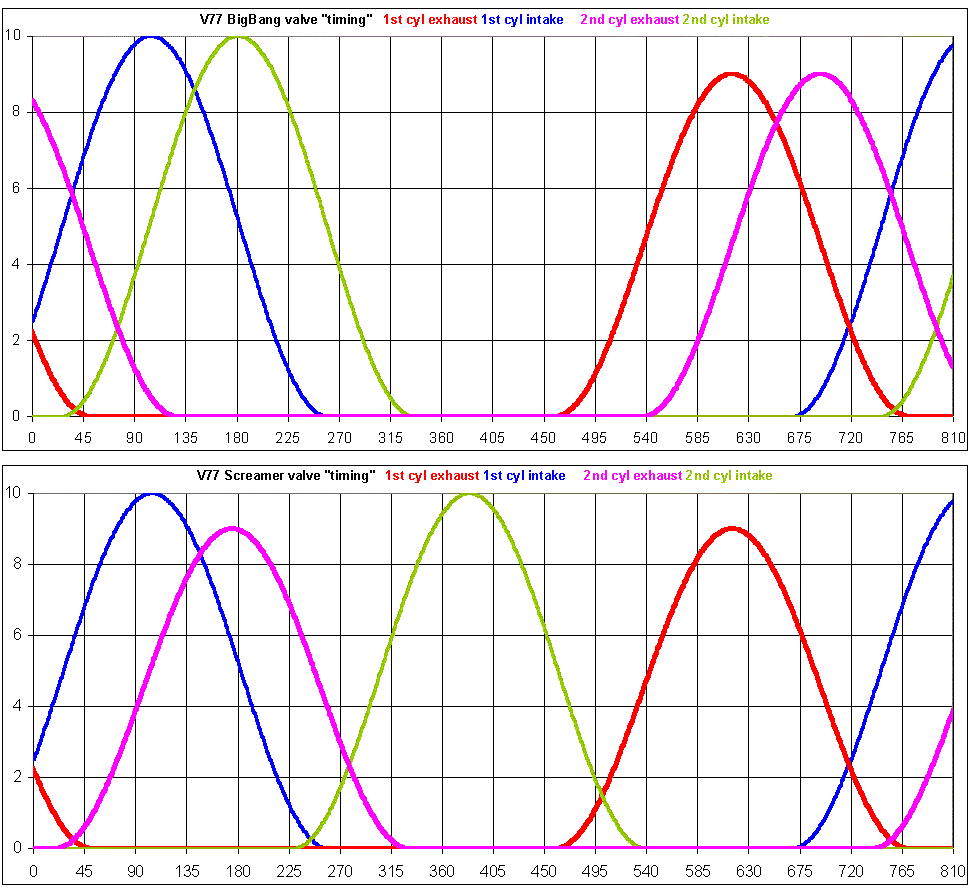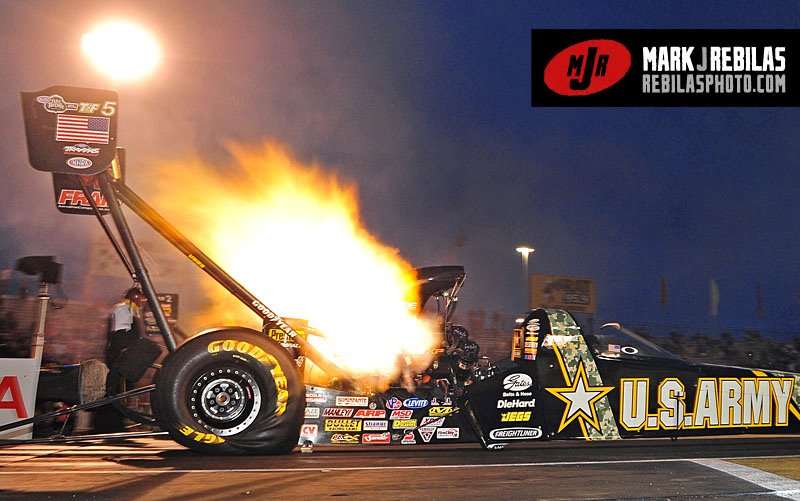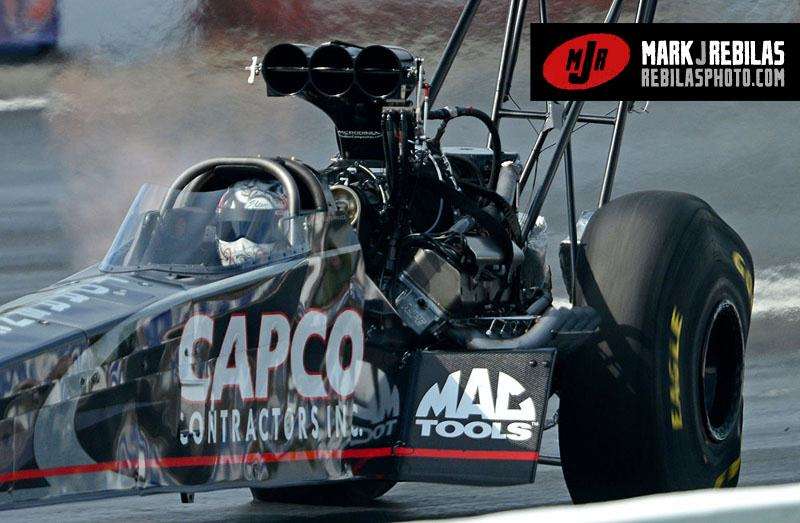For the MXV / SXV case this is true only when independent exhaust systems are used for the two cylinders.
In the following plot (very similar to the plot at post 193) it is shown the valve "timing" for the BigBang V77 and the Screamer V77.

The ignitions in the BigBang happen at 360 and 437 crank degrees (i.e. 360 crank degrees after the overlap).
The ignitions in the Screamer happen at 360 and 643 crank degrees.
Around 720 crank degrees (here is the big difference),
instead of having - in the the BigBang - a significant vacuum after the exhaust valves of the 1st cylinder to accelerate the charge in the intake pipe during the overlap,
there is a significant back pressure caused by the exhaust of the 2nd cylinder:
during valve overlap in the 1st cylinder, the exhaust valves of the 2nd cylinder are widely open (the exhaust valves of the 2nd cylinder are open nearly their maximum lift) with the piston of the 2nd cylinder moving rapidly upwards and expelling the gas to the exhaust wherein the pressure rises; the exhaust gas from the 2nd cylinder finds the way - though the open exhaust and intake valves of the 1st cylinder - and passes to the intake manifold (ITB) of the 1st cylinder, degrading substantially the 1st cylinder breathing efficiency (quality, quantity and temperature of charge).
The injection maps show the 2nd cylinder (the rear cylinder) operating "richer".
What actually happens is that the rear cylinder breaths better than the front cylinder and consequently needs more fuel in order to keep the mixture as lean - or rich- as the front cylinder.
In comparison, it is interesting how much the timing of the valves matches in the SXV: the exhaust valves of the one cylinder open only after the exhaust valves of the other cylinder are closed.
Similarly for the intake valves of the SXV: the intake valves of the one cylinder open only after the intake valves of the other cylinder are closed.
The air filter box feeds both cylinders with air. It is quite different to have both cylinders sucking air from the air filter box at the same time (as happens in the MXV from 90 to 180 crank degrees) than to have each cylinder sucking air in its own time interval.
The "breathing overlap" seems as being the dominant factor for the difference in the power and torque curves of the MXV and SXV (and consequently of their difference in traction and feeling).
In comparison, the "combustion plus inertia torque" (post 168) that arrives to the rear tyre seems as being a several times less significant factor.
As it is now, the front cylinder of the MXV operates like being of substantially less capacity.
If the exhaust systems of the two cylinders are isolated (as well as the intake systems of the two cylinders), the MXV cannot behave differently than a couple of singles that share the same crankshaft.
And then it comes the moment for systems like the DVVA to combine top peak power with top traction and feeling.
Thanks
Manolis Pattakos













